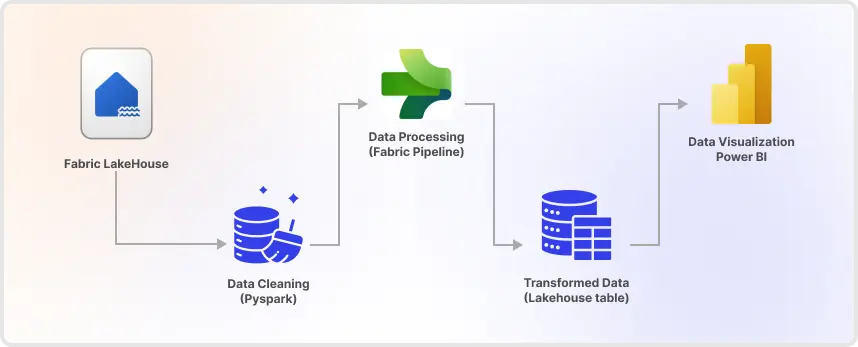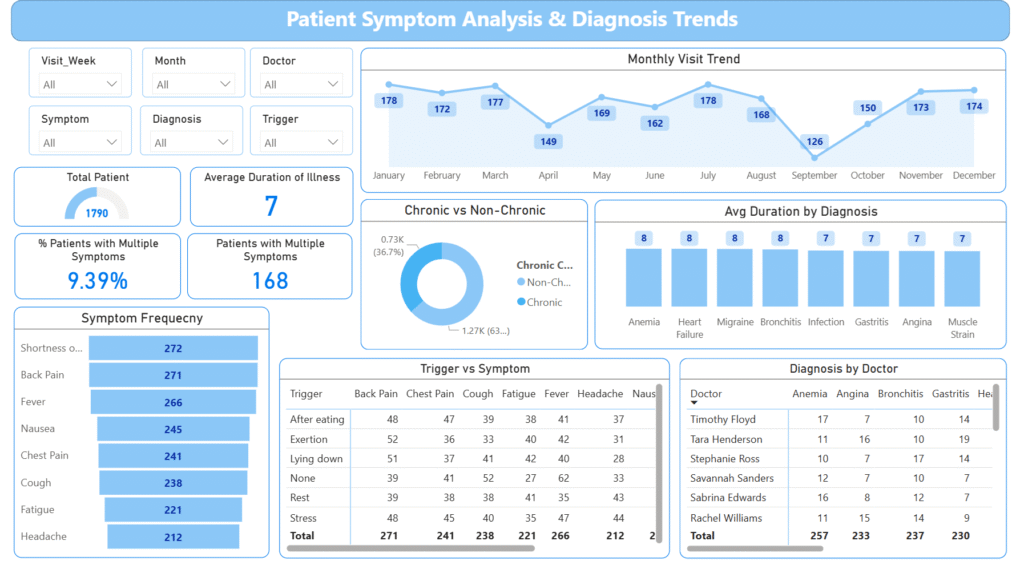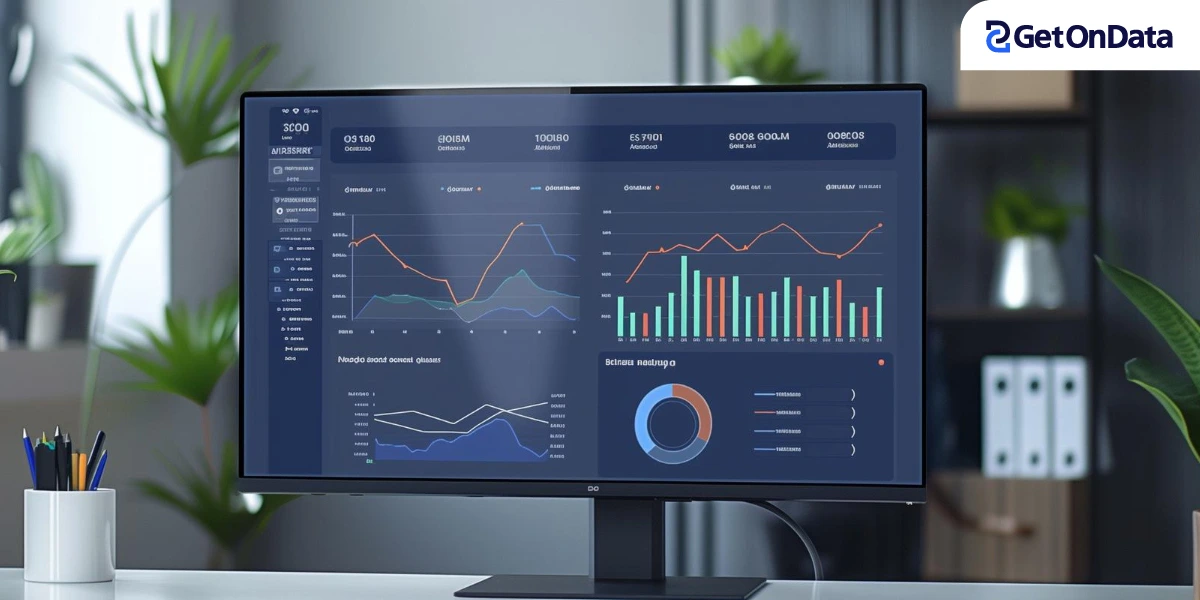Patient Symptom Analysis & Diagnosis Trends With Innovative Dashboard
Measurable Success Achieved in Patient Care with GetOnData
45 %
reduction in manual report preparation time
30 %
improvement in chronic case tracking
25 %
better identification of high-burden patients
Introduction to Patient Symptom Analysis Using Power BI for Improved Healthcare Outcomes
Key Highlights
Data Engineering
Data Transformation
Data Visualization

Key Challenges in Analyzing Patient Symptoms and Diagnosis
Fragmented Patient Data Across Visits
Patient data was stored across multiple systems, making it difficult to access a unified view of medical history, delaying accurate patient diagnosis and patient care.
No Visibility into Patients with Recurring or Multiple Symptoms
The lack of a system to track recurring patient symptoms prevented healthcare providers from identifying patterns and diagnosing underlying conditions early.
Manual Reporting Processes Were Time-Consuming
Manual data handling and reporting slowed the process of generating actionable insights, delaying timely decision-making for patient care.
Lack of Patient Insights into Doctor Workloads and Medication Trends
Without a centralized tracking system, monitoring doctor workloads and medication trends was difficult, leading to inefficiencies in resource allocation and patient treatment.
Solution for Streamlining Patient Symptom and Diagnosis Tracking
We developed an interactive Power BI dashboard for the healthcare provider, which consolidated critical data across patient visits, patient symptoms, patient diagnoses, and patient treatments. By integrating advanced DAX measures, the dashboard highlighted patients experiencing multiple symptoms, enabling the healthcare provider to easily identify and track recurring issues.
The solution visualized symptom trends over time, offering valuable insights into the progression of patient conditions. It provided real-time data on patient visits, doctor workloads, and medication effectiveness, empowering healthcare teams to make informed decisions, optimize resource allocation, and improve patient care.
By consolidating critical data on symptoms, diagnoses, and treatments into a single interactive Power BI dashboard, clinicians gained actionable views that supported proactive healthcare management. This comprehensive and data-driven approach enabled personalized care, efficient tracking of chronic conditions, and ultimately, better patient outcomes.

Get thoughtful updates on what’s new in technology and innovation
Related Blogs
Case Studies
Ready to unlock the power of data for your business?
Technology We Used
Microsoft Fabric
Power BI
DAX
Power Query
Business Impact of Power BI Dashboard for Tracking Patient Symptoms and Diagnosis Trends
Faster Decision-Making
With immediate access to actionable insights, healthcare providers could make more informed and timely decisions for better patient outcomes.
Improved Chronic Care Management
The ability to track chronic cases in real-time allowed for proactive patient care, improving long-term health outcomes for patients.
Support for Preventive Care Planning
By visualizing patient symptom trends and treatment patterns, the patient insight dashboard helped healthcare providers plan and implement preventive patient care strategies.











